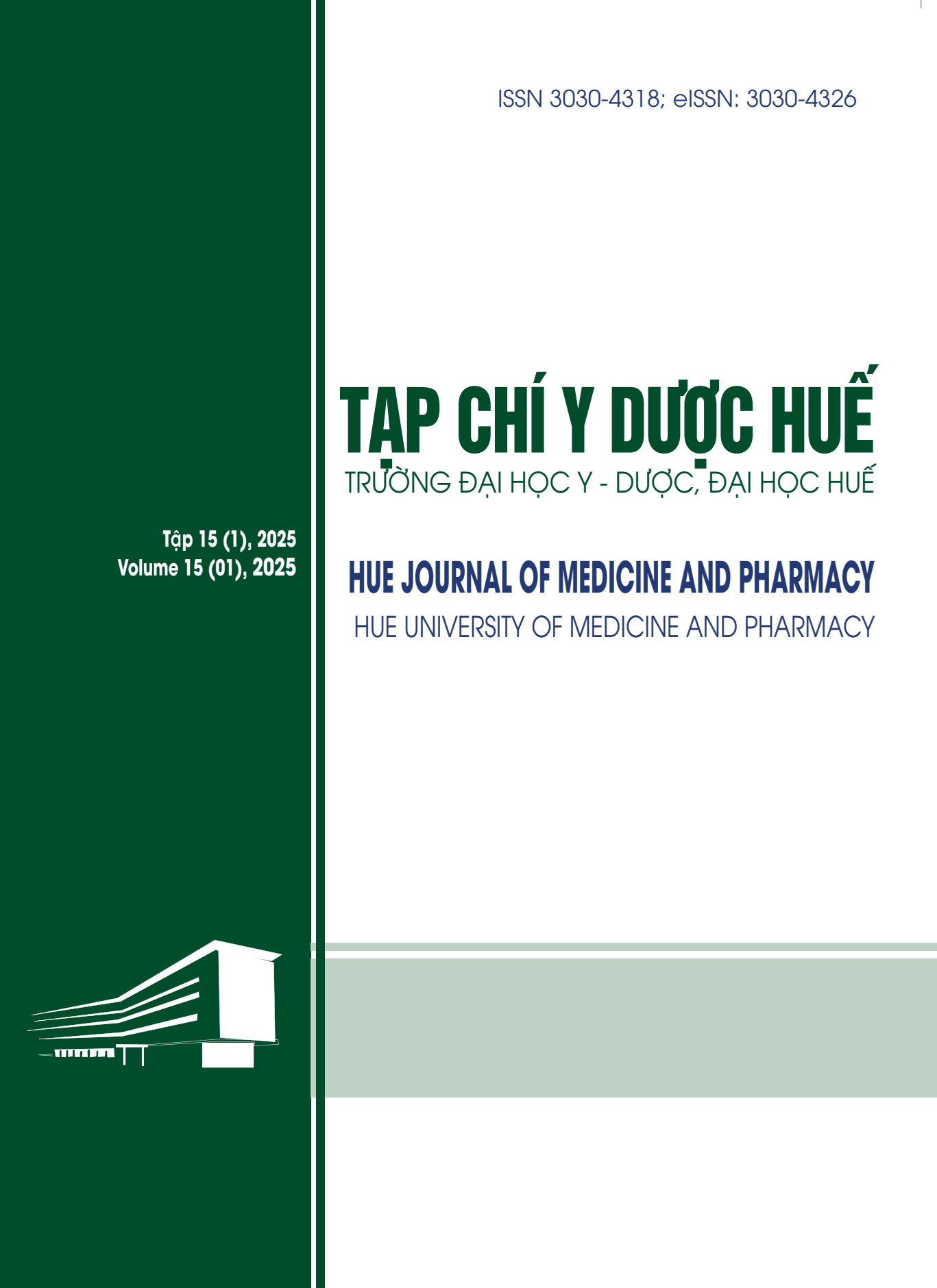Abstract
Background: Carpal tunnel syndrome (CTS) is the most common peripheral nerve compression disorder, with the most definitive treatment being the surgical procedure of the transverse carpal ligament release. This study aims to apply and compare the DASH and QuickDASH scores in evaluating the surgical outcomes for carpal tunnel syndrome.
Methods: This prospective, longitudinal study followed 33 patients diagnosed with and surgically treated for carpal tunnel syndrome at the Hue University of Medicine and Pharmacy Hospital from March 2023 to March 2024. The patients were evaluated based on clinical symptoms, physical examination, and the DASH and QuickDASH scores before and at least three months after surgery.
Results: The evaluation of 33 CTS patients who underwent carpal tunnel release surgery showed that the mean DASH scores before and after surgery were 52.88 and 8.94, respectively (p<0.05); the mean QuickDASH scores before and after surgery were 51.39 and 8.32, respectively (p<0.05). There was no statistically significant difference between the DASH and QuickDASH scores at each follow-up time point (p>0.05).
Conclusion: The DASH and QuickDASH scores are effectively applied in evaluating the surgical outcomes for CTS, with no significant difference in the results between the two scoring systems.
| Published | 2025-04-24 | |
| Fulltext |
|
|
| Language |
|
|
| Issue | Vol. 15 No. 1 (2025) | |
| Section | Original Articles | |
| DOI | 10.34071/jmp.2025.1.14 | |
| Keywords | Thang điểm DASH, QuickDASH, hội chứng ống cổ tay, phẫu thuật giải phóng ống cổ tay, đánh giá kết quả phẫu thuật DASH score, QuickDASH score, carpal tunnel syndrome, carpal tunnel release surgery, surgical outcome evaluation |

This work is licensed under a Creative Commons Attribution-NonCommercial-NoDerivatives 4.0 International License.
Copyright (c) 2025 Hue Journal of Medicine and Pharmacy
Cazares-Manríquez MA, Wilson CC, Vardasca R et al. A Review of Carpal Tunnel Syndrome and Its Association with Age, Body Mass Index, Cardiovascular Risk Factors, Hand Dominance, and Sex. Appl. Sci. 2020; 10(10), 3488.
Hudak P, Amadio PC, Bombardier C. Development of an upper extremity outcome measure: The DASH (disabilities of the arm, shoulder and hand). The Upper Extremity Collaborative Group (UECG). Am J Ind Med. 1996; 29(6):602-608.
Clement ND, Duckworth AD, Jenkins PJ et al. Interpretation of the QuickDASH score after open carpal tunnel decompression: threshold values associated with patient satisfaction. J Hand Surg Eur. 2016; 41(6):624-631.
Lê Thị Liễu. Nghiên cứu đặc điểm lâm sàng, điện cơ và siêu âm doppler năng lượng trong hội chứng ống cổ tay. Luận văn tiến sĩ y học, Đại Học Y Hà Nội. 2018.
Phan Xuân Nam. Đặc điểm lâm sàng và điện sinh lý của Hội chứng ống cổ tay”, Tạp chí nghiên cứu y học Thành phố Hồ Chí Minh. 2020; 17(3):80-84.
Shahram N. Endoscopic Carpal Tunnel Release: A 5-Year Experience. Trauma Mon. 2014; 19(4):15-19.
Moghtaderi A, Izadi S, Sharafadinzadeh N. An evaluation of gender, body mass index, wrist circumference, and wrist ratio as independent risk factors for carpal tunnel syndrome. Acta Neurol Scand. 2005; 112:375-379.
Nguyễn Lê Trung Hiếu, Vũ Anh Nhị. Phân độ lâm sàng và điện sinh lý thần kinh cơ trong hội chứng ống cổ tay. Tạp chí Y học thành phố Hồ chí Minh. 2008; 12(1):267-277.
Mallick A. Comparing the Outcome of a Carpal Tunnel Decompression at 2 Weeks and 6 Months. J Hand surg. 2007; 32(A):1154-1158.
Tan JS, Tan AB. Outcomes of open carpal tunnel releases and its predictors: a prospective study. Hand Surg. 2012;17(3):341-345.
Uchiyama S, Imaeda T, Toh S, et al. Comparison of responsiveness of the Japanese Society for Surgery of the Hand version of the carpal tunnel syndrome instrument to surgical treatment with DASH, SF-36, and physical findings. J Orthop Sci. 2007;12(3):249-253.
Niekel MC, Lindenhovius AL, Watson JB, et al. Correlation of DASH and QuickDASH with measures of psychological distress. J Hand Surg Am. 2009;34(8):1499- 1505.






